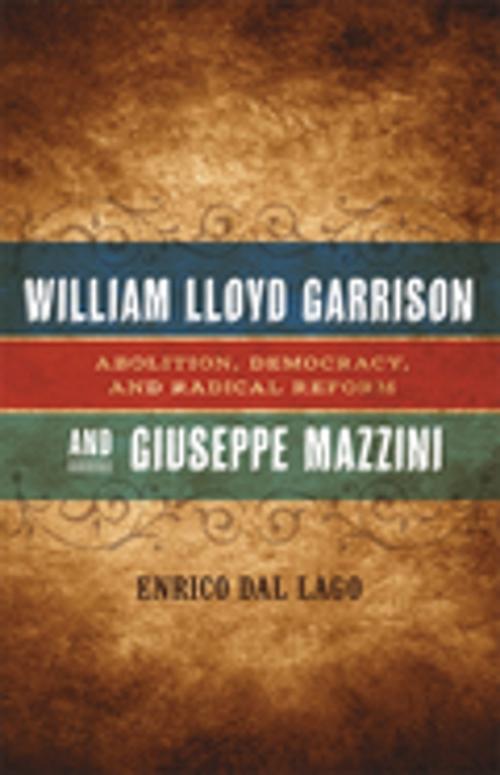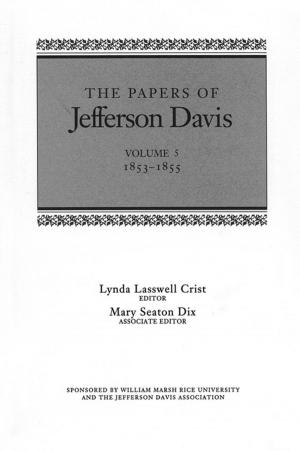William Lloyd Garrison and Giuseppe Mazzini
Abolition, Democracy, and Radical Reform
Nonfiction, History, Western Europe, Social & Cultural Studies, Social Science, Discrimination & Race Relations, Americas, United States, Civil War Period (1850-1877)| Author: | Enrico Dal Lago | ISBN: | 9780807152089 |
| Publisher: | LSU Press | Publication: | November 11, 2013 |
| Imprint: | LSU Press | Language: | English |
| Author: | Enrico Dal Lago |
| ISBN: | 9780807152089 |
| Publisher: | LSU Press |
| Publication: | November 11, 2013 |
| Imprint: | LSU Press |
| Language: | English |
William Lloyd Garrison and Giuseppe Mazzini, two of the foremost radicals of the nineteenth century, lived during a time of profound economic, social, and political transformation in America and Europe. Both born in 1805, but into dissimilar family backgrounds, the American Garrison and Italian Mazzini led entirely different lives -- one as a citizen of a democratic republic, the other as an exile proscribed by most European monarchies. Using a comparative analysis, Enrico Dal Lago suggests that Garrison and Mazzini nonetheless represent a connection between the egalitarian ideologies of American abolitionism and Italian democratic nationalism.
Focusing on Garrison's and Mazzini's activities and transnational links within their own milieus and in the wider international arena, Dal Lago shows why two nineteenth-century progressives and revolutionaries considered liberation from enslavement and liberation from national oppression as two sides of the same coin. At different points in their lives, both Garrison and Mazzini demonstrated this belief by concurrently supporting the abolition of slavery in the United States and the national revolutions in Italy. The two meetings Garrison and Mazzini had, in 1846 and in 1867, served to reinforce their sense that they somehow worked together toward the achievement of liberty not just in the United States and Italy, but also in the Atlantic and Euro-American world as a whole. In the end, the abolition of American slavery led to Garrison's consecration, while the new Italian kingdom forced Mazzini into exile. Despite these different outcomes, Garrison and Mazzini both attracted legions of devoted followers who believed these men personified the radical causes of the nations to which they belonged.
William Lloyd Garrison and Giuseppe Mazzini, two of the foremost radicals of the nineteenth century, lived during a time of profound economic, social, and political transformation in America and Europe. Both born in 1805, but into dissimilar family backgrounds, the American Garrison and Italian Mazzini led entirely different lives -- one as a citizen of a democratic republic, the other as an exile proscribed by most European monarchies. Using a comparative analysis, Enrico Dal Lago suggests that Garrison and Mazzini nonetheless represent a connection between the egalitarian ideologies of American abolitionism and Italian democratic nationalism.
Focusing on Garrison's and Mazzini's activities and transnational links within their own milieus and in the wider international arena, Dal Lago shows why two nineteenth-century progressives and revolutionaries considered liberation from enslavement and liberation from national oppression as two sides of the same coin. At different points in their lives, both Garrison and Mazzini demonstrated this belief by concurrently supporting the abolition of slavery in the United States and the national revolutions in Italy. The two meetings Garrison and Mazzini had, in 1846 and in 1867, served to reinforce their sense that they somehow worked together toward the achievement of liberty not just in the United States and Italy, but also in the Atlantic and Euro-American world as a whole. In the end, the abolition of American slavery led to Garrison's consecration, while the new Italian kingdom forced Mazzini into exile. Despite these different outcomes, Garrison and Mazzini both attracted legions of devoted followers who believed these men personified the radical causes of the nations to which they belonged.















